How To Cut A Melon—The Smart Way
This post may contain affiliate links. Read my full disclosure policy.
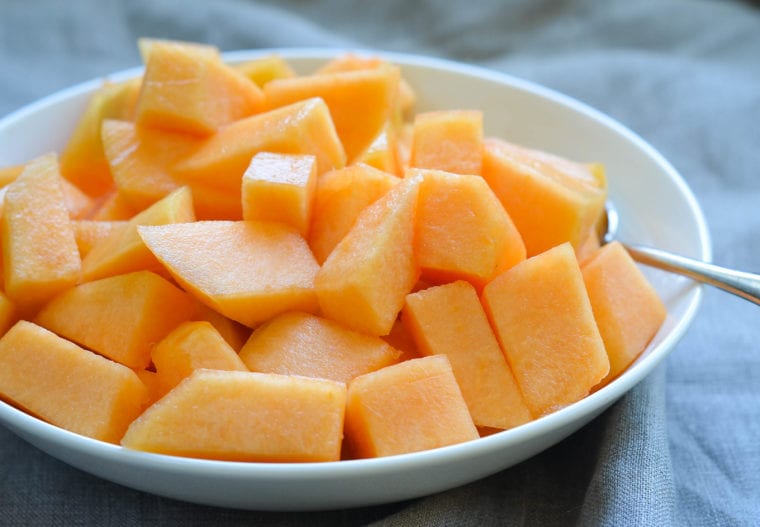
Who doesn’t love a sweet, juicy melon in the summer? You just can’t beat ripe cantaloupe or honeydew when they are in high season. And, no, you do not need to buy pre-cut melon to avoid slicing off a finger! There are many ways to cut a melon, but I find this method, albeit a bit different, to be the safest and most efficient.
Table of Contents
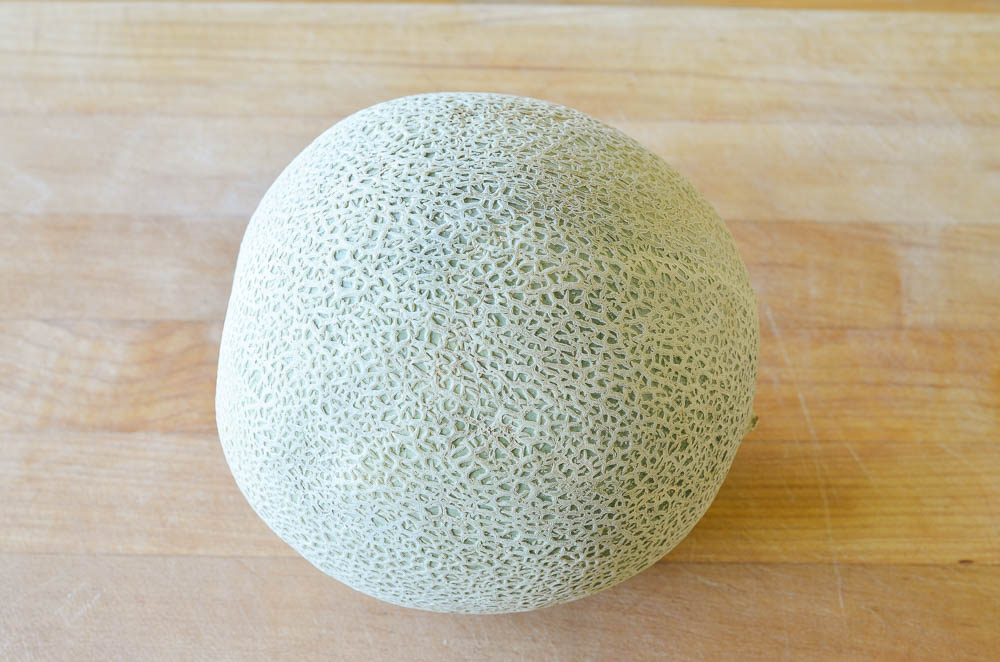
How To Select A Melon
Before we get to the how-to, a few words on selecting a melon. Many people think picking a ripe melon at the supermarket is a game of chance. That’s somewhat true but there are a few guidelines to ensure you’re choosing a good melon on more than a leap of faith. First, avoid any melons that have bruising or soft spots. In terms of weight, choose a fruit that feels heavy for its size. And, finally, use your nose — when you apply gentle pressure to the stem end, it should yield a bit and give off a slightly sweet scent.
Step-By-Step Instructions
First, get out a large, sharp knife (a serrated edge works well) and a clean cutting board. Wash the melon well, then cut a thin slice off of each end of the melon to create two flat surfaces.
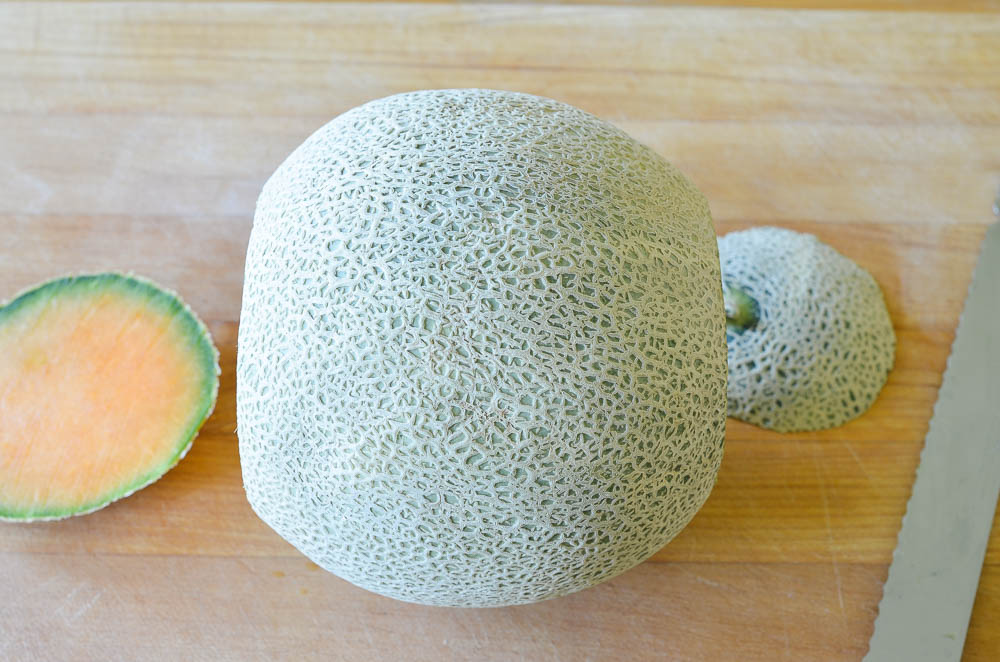
Once you have two flat surfaces, place the end with the larger surface area on the cutting board and start removing the rind by running your knife down the side of the melon in wide strips until all of the rind has been cut away. Be careful not to cut away too much of the edible flesh when removing the rind.
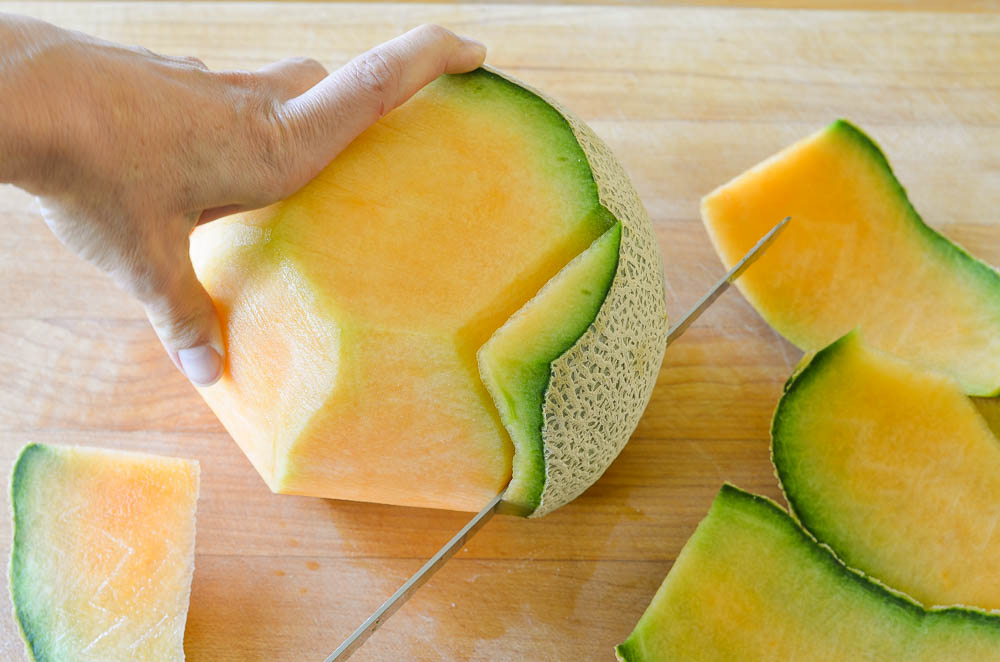
With that same flat surface on the cutting board, cut down through the center of the melon to create two halves.
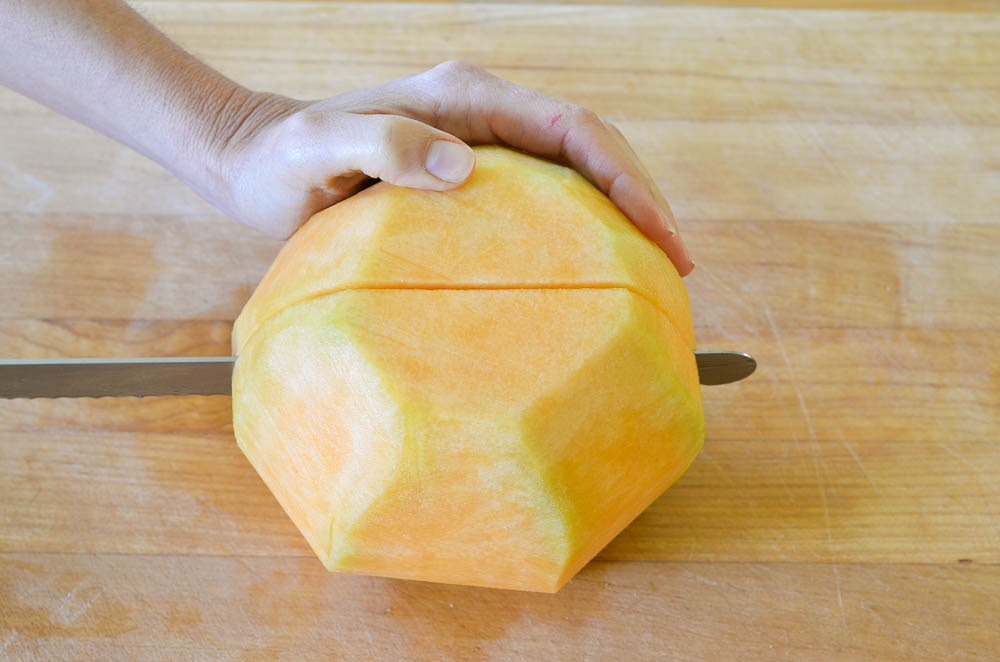
This will expose the seeds inside the melon.
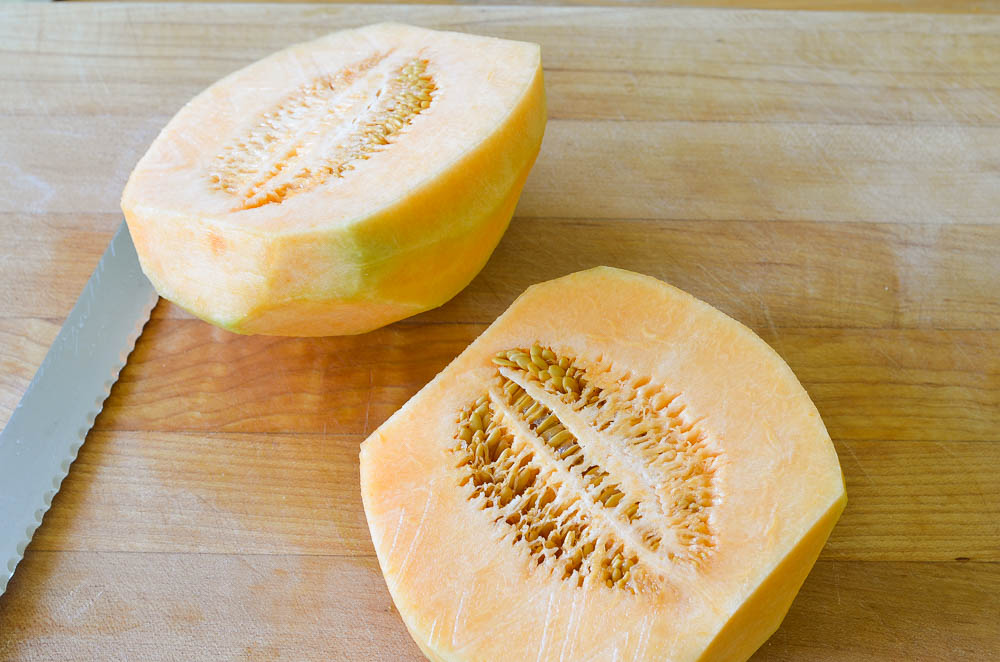
Use a spoon to remove the seeds from the melon. Apply just enough pressure to remove the seeds without digging too far down into the flesh.
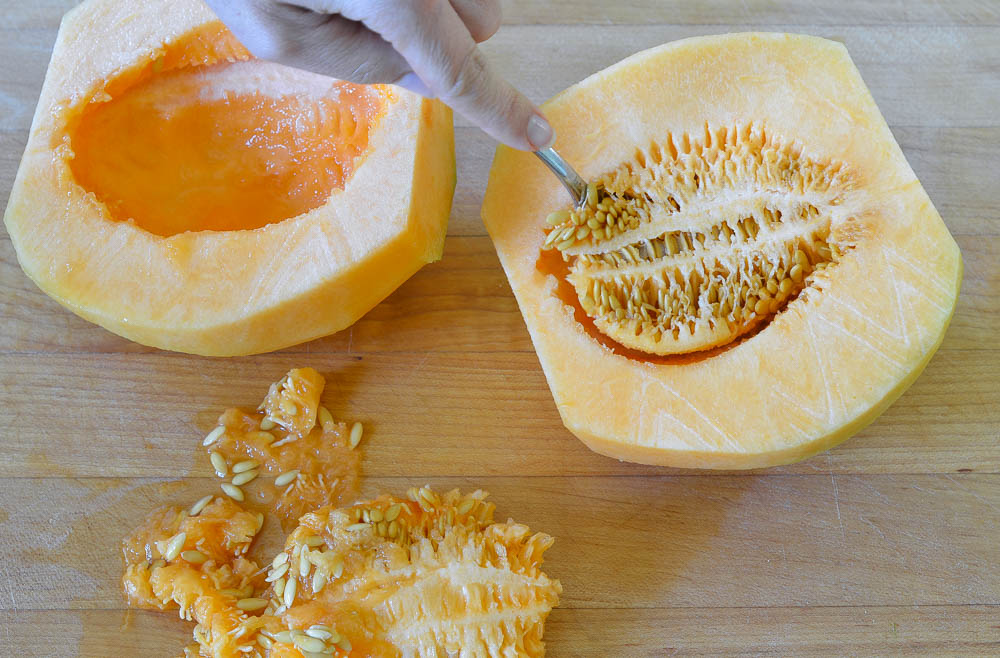
Flip both melon halves over so the flat sides are facedown on the cutting board. Then you can dice the fruit. Start by cutting a number of parallel slices heading in one direction on the melon. I usually make somewhere between 9 to 12 slices depending upon the size of the melon. Apply gentle pressure to the melon with your hand to keep the sliced pieces together and rotate the melon. Cut slices in the other direction to create chunks.
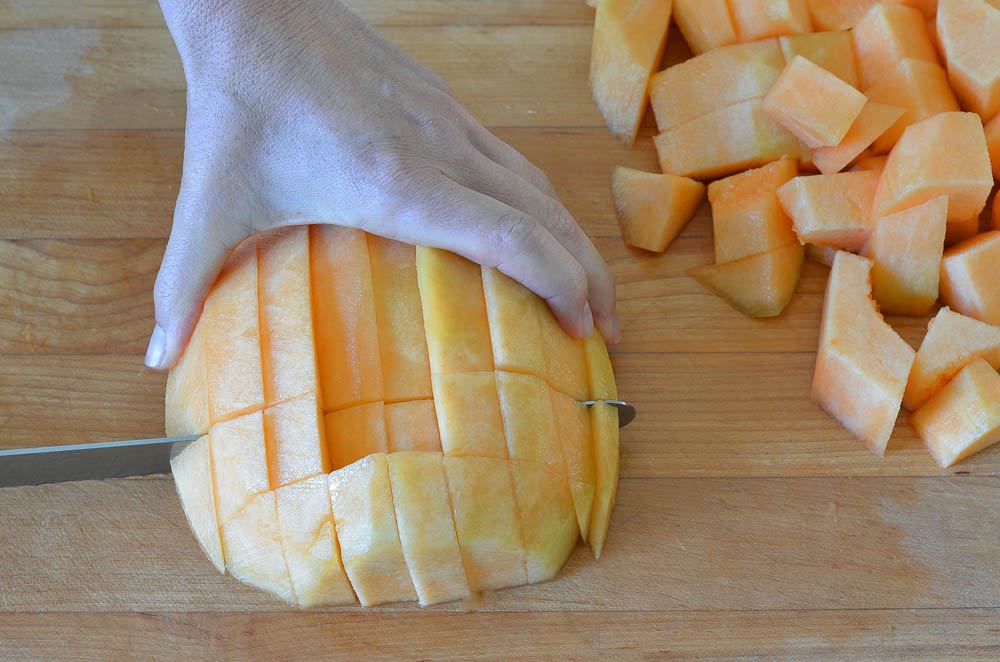
Enjoy the cantalope in smoothies, as part of a fruit platter or fruit salad, or wrapped with prosciutto as a fun and easy app!


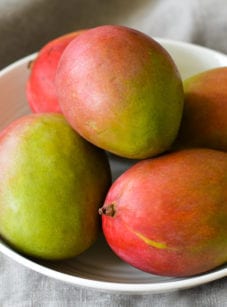
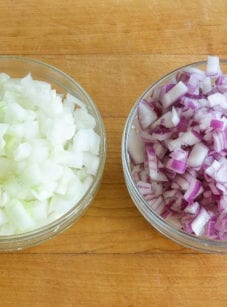
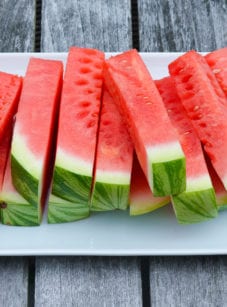
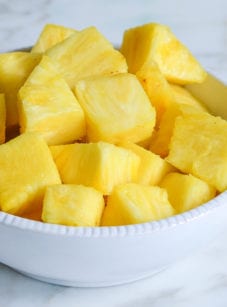
Excellent way to cut a cantaloupe, which I will be doing tomorrow when I go shopping for melons! Can’t wait for your watermelon tutorial! I love your recipes and can’t wait for your cookbook to come out.
It actually DOES say to wash the melon. It is right in the paragraph beginning “let’s get started..”
michelle,
Jenn replied to my suggestion and it was fixed… you can read her reply to my comment. the original did not state that.
it was an omission, corrected.
I have another suggestion for the cantaloupe. I like using an ice cream scoop to get out the seeds. I find the round shape works very well.
From what I just read under “Lets get started” you will see that Jen did include WASH the melon well.
Great job Jen!
Re-read the paragraph “So let’s get started.” It clearly says to wash the melon as well as using a clean cutting board before making any cuts.
Isn’t the melon kind of slippery to handle when the rind is cut off?
A little but if you place it flat side down, it’s easy to work with.
When we have melon I just cut it in wedges with the rind on or in half if it is a small one,, and eat it with a spoon from the rind. No need to wash first.
All these comments say to wash it first, you did in fact advise this before showing how to cut it up.!
Nurse Molly here: imagine the unpeeled melon skin full of nasty germs. Then you slice the knife right through those germs into the melon spreading them everywhere. That’s why you wash it first.
Yep. As my mom used to say, “You don’t know where people’s hands have been.”
This is brilliant. I guess I’m not too old to learn new tricks. Thank you and keep ’em coming. I look forward to every post.
Nurse Laura here:). Don’t forget to wash the melon before slicing to deter the possibility of cross-contamination. Thanks for the tutorial.
“Wash the melon well, then cut a thin slice off of each end of the melon to create two flat surfaces.” Third paragraph.
Could I just remind you to wash the melon first? We have no idea where it has spent its life up to now, and you are going to be cutting into the rind and then the flesh, where you could be transferrring a lot of germs.